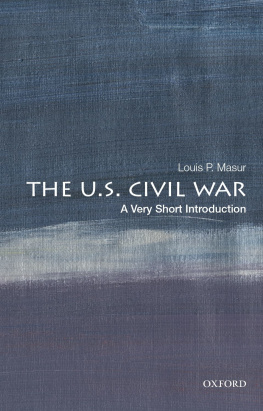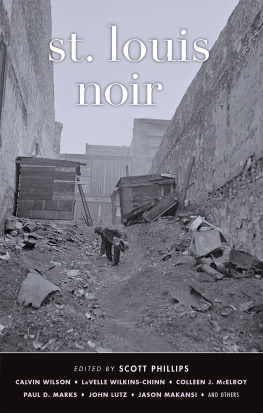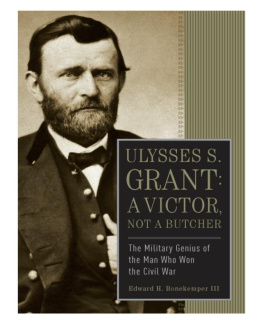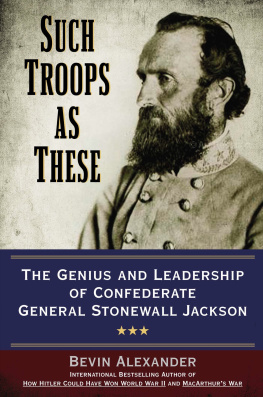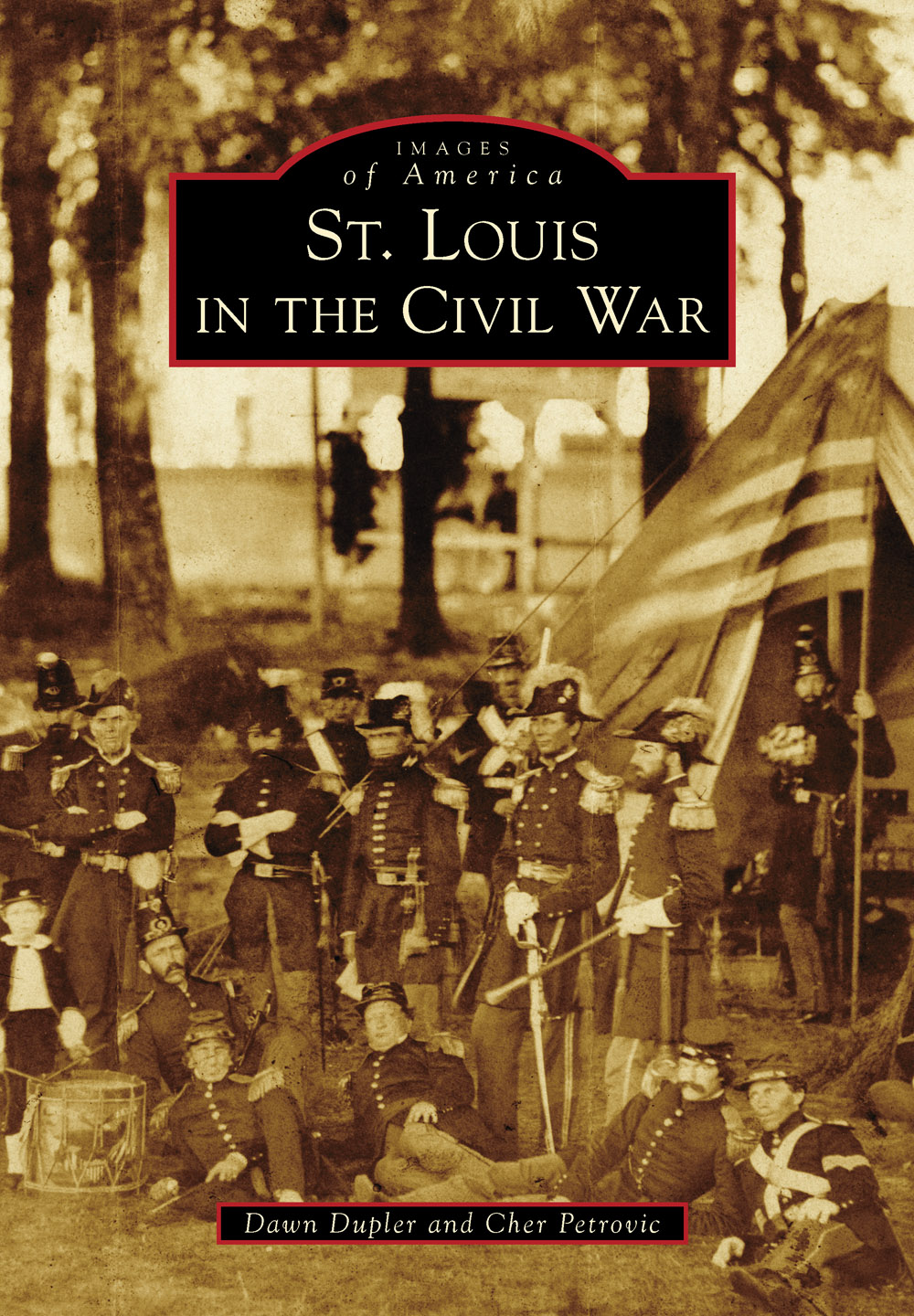
IMAGES
of America
ST. LOUIS
IN THE CIVIL WAR

This is one of a series of patriotic postcards drawn by W.F. Burger in the early 1900s. Many were sent to commemorate Decoration Day. They are highly valued by collectors today. (Cher Petrovic.)
ON THE COVER:
The cover shows an encampment of the 1st Regiment, Missouri State Guard, only months before the tragic Camp Jackson Affair, a St. Louis mob action that ended in many deaths. This photograph was taken at the St. Louis fairgrounds in 1860. Col. A.R. Easton commanded the regiment. (Missouri History Museum, St. Louis.)
IMAGES
of America
ST. LOUIS
IN THE CIVIL WAR
Dawn Dupler and Cher Petrovic

Copyright 2014 by Dawn Dupler and Cher Petrovic
ISBN 978-1-4671-1126-3
Ebook ISBN 9781439644799
Published by Arcadia Publishing
Charleston, South Carolina
Library of Congress Control Number: 2013942289
For all general information, please contact Arcadia Publishing:
Telephone 843-853-2070
Fax 843-853-0044
E-mail
For customer service and orders:
Toll-Free 1-888-313-2665
Visit us on the Internet at www.arcadiapublishing.com
Dawn Dupler dedicates the book with much love to her talented daughter, Riley Luebbers.
Cher Petrovic dedicates the book to the memory of her great-great grandfather, Private John Null, and all the others who fought for what they believed in. May we never forget their sacrifices.
CONTENTS
ACKNOWLEDGMENTS
Those kind enough to grant us use of images are credited in parentheses after captions. The authors wish to thank many people for their help during this project, including Pamela Sanfilippo, historian, Ulysses S. Grant National Historic Site; Janet Wilzbach, museum collections administrator, Jefferson Barracks Historic Site; Connie Nisinger, archivist, Bellefontaine Cemetery; Walt Busch, site supervisor, Fort Davidson Historic Site; Deborah Wood, museum curator, Wilsons Creek National Battlefield, part of the National Park Service; John Waide, St. Louis University archivist; and the Missouri Historical Museum. Additional thanks go to William Naeger, Tiffany Parker, Kate Worland, Joseph Maghe, Dennis W. Belcher, Randy McGuire, Lynne Martin, and Charles Orear. A special thanks to Dawns husband, Michael Luebbers, for his editing and support. Also special thanks to Chers husband, Bob Petrovic, for help with research and the use of his extensive collection of Civil War and GAR memorabilia.
INTRODUCTION
St. Louiss place in Civil War history is often overlooked, yet only Tennessee and Virginia claim more Civil War battles than Missouri. Politicians and generals recognized the citys importance. St. Louis was the eighth-largest US city in population at the time. It was key to river traffic, and the St. Louis Arsenal housed the largest store of weapons west of the Mississippi River. As war loomed, both the North and the South understood what the arsenals firepower would mean to the Western theater should military conflict break out. The conventional thinking at the time was that whoever controlled the St. Louis Arsenal and its large cache of weapons controlled Missouri.
Having been settled by people from the South, the North, and by immigrants, St. Louis had a population reflecting that of the nation. When the secession crisis began, Union leaders worried that St. Louis could fall into Confederate hands. While Missouri had the distinction of being both a slave state and a border state belonging to the Union, many Missourians wished to remain neutral. Still, many supported the Confederacy. The City of St. Louis, with its influx of German immigrants, had many pro-Unionists who supported free labor. St. Louis became a crucible in which many different views on slavery and states rights came together.
In the decade leading up to the Civil War, national attention focused on one enslaved man, Dred Scott, and his fight to become a free man. The Dred Scott case, first filed in St. Louis, made its way to the US Supreme Court, which ruled that Scott had no right to sue for his freedom, because Americans of African descent were not citizens. The court also ruled that the restrictions of slavery as outlined in the Missouri Compromise of 1820 were unconstitutional, throwing into question how and if slavery would expand throughout the United States, and in the process, contributing to the rising tensions between the North and South.
In May 1861, the annual Missouri State Militia encampment gathered at Lindell Grove on what is now the campus of St. Louis University. Pro-Southern militia members named the installation Camp Jackson in honor of Missouri governor Claiborne Jackson, a Southern sympathizer. Capt. Nathaniel Lyon, a staunch Unionist, heard of a plot by Confederates to ship contraband in the form of diverted US weapons to Camp Jackson so that the governor could seize the St. Louis Arsenal. In an effort to secure the arsenal, and in turn, the Union, Lyon led his army of 6,000-plus Union troops from the arsenal toward the state militia gathering to capture the encampment.
The militia at Camp Jackson found itself outnumbered ten to one and could only surrender. As Lyons men marched their 600 captives through St. Louis, an angry crowd gathered. People jeered, some throwing rocks, then shots rang out. No one knows who fired first, but when the shooting stopped, 28 soldiers and civilians lay dead. The first military conflict in Missouri occurred in a clash between state militia and federal troops in what history would call The Camp Jackson Affair.
The tragic Camp Jackson Affair came after years of tension between people who supported the South and its ideology and those who supported the North. Afterward, the state grew even more polarized into pro-South and pro-North camps. Men by the thousands joined either the Union or the Confederacy. For a short time in the citys history, St. Louis was home to two opposing armies. Only one could remain.
Recently promoted Gen. Nathaniel Lyon chased Governor Jackson and former Missouri governor Sterling Price, who both had declared allegiance to the South, out of St. Louis. Lyon battled Confederate general Prices troops at Wilsons Creek, where Lyon died, becoming the first Union general to fall in the war.
At the outset of war, Washington leaders called on St. Louis engineer and businessman James Eads to provide a solution to control the Western rivers. The self-educated Eads built the first ironclad gunboats to fight in the war, often using his own money to continue manufacturing around the clock. This new flotilla proved vital in capturing Forts Henry and Donelson and in opening the river for the Union army, leading the charge in the Mississippi River campaigns.
When war came, St. Louis was not prepared for the onslaught of wounded, sick, orphaned, and displaced. Jefferson Barracks, built to house and train troops, mustered in few soldiers during the war because the medical department turned it into an installation for the sick and wounded. Shortly after the war began, it became one of the largest hospital complexes in both the North and South.
Resourceful and charitable people went to great lengths to take care of those in need. St. Louis civic leaders Jessie Benton Fremont and the Rev. William Greenleaf Eliot organized the Western Sanitary Commission, along with the Ladies Union Aid Society, which provided additional hospitals and staff. Steamships were transformed into floating medical centers. These two civic groups relied on private fundraising to operate. Hundreds of women left the parlor and provided aid, some risking their lives in the process.
Next page

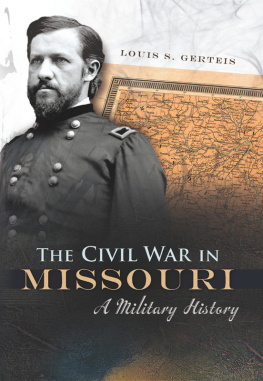
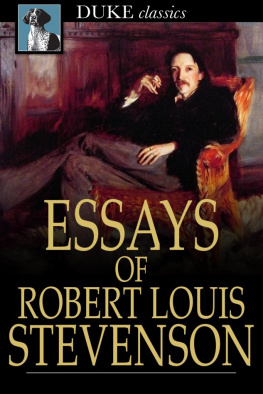
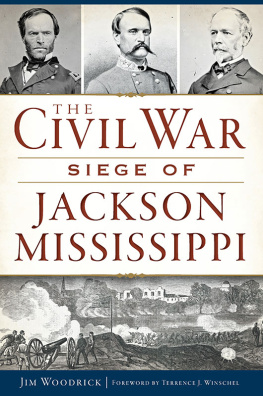
![Louis de Montfort - The Saint Louis de Montfort Collection [7 Books]](/uploads/posts/book/265822/thumbs/louis-de-montfort-the-saint-louis-de-montfort.jpg)
